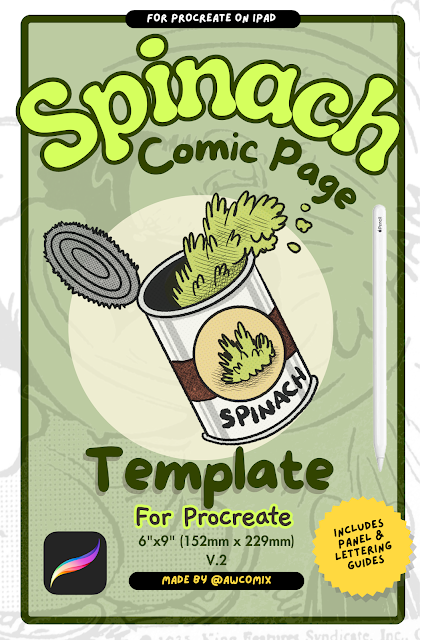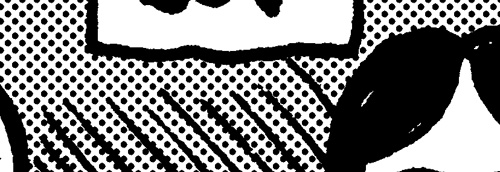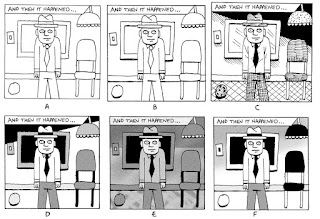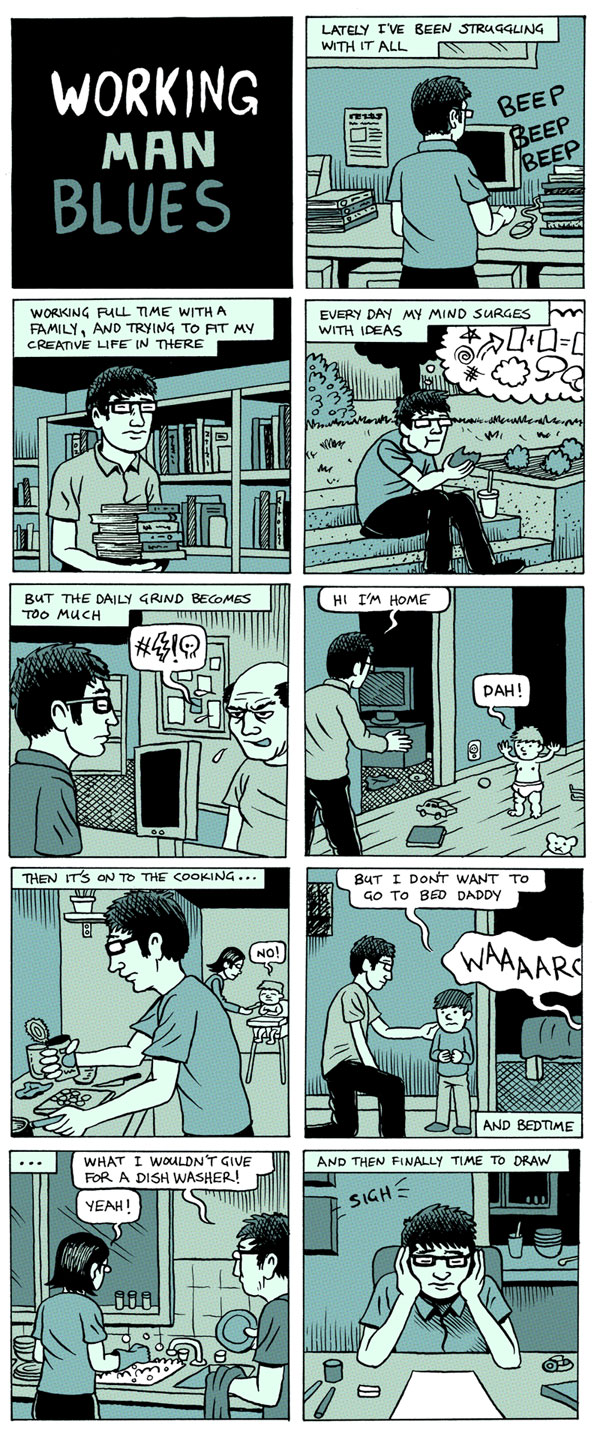DWWP review

The other day I picked up Matt Madden and Jessica Abel's book Drawing words and writing pictures' which I had been wanting before it came out. I should preface this by saying I am big fan of 'how to' art books, and make a point to read them when I can. The best way to see if you will like the book is to look at the art inside, if it is good then it makes sense that the advice will be also good. Then again I have read my share of bad how to cartoon books as I always find it interesting to read from another artists perspective and you can almost guarantee that there will be one little gem of information in the book that is helpful or in the very least confirms what you are already doing. I really liked Jessica Able’s DIY guide to comics on her website (which is currently down and or in the process of being moved to the www.dw-wp.com website) and I also like the both of the authors art.
Sure enough I was not let down by this book! Not only is it very comprehensive in terms of what it is teaching but it also has fantastic examples of really good artists processes and methods. Like for example Charles Burns pencils, Tom Hart's 'Hutch Owen' thumb nails, and lots of great examples of comic art. Whilst I have not read it cover to cover I had read a large majority of it and it is extremely worth buying. If you are an aspiring comic artists/cartoonist then you should definitely try and get your hands on a copy of this book. My main reason for picking it up (other than the 'one gem' theory) is that it has heaps of great examples for classroom lessons for any future comic workshops and teaching I do. I can also compare my methods to theirs and make improvements overall.
So far the best thing that I have gotten out of the book is a reminder to put in your best effort. By which I mean it is often hard when making comics to admit that some lettering does not work and go back and redo it, even harder for a drawing. It is easy to think, it will do, or that it adds to the feel of the comic. For example, I like having a slightly sketchy feel to my comic but bad lettering is bad lettering and there is no real excuse, and the book has reminded me to avoid these pitfalls. There is also a helpful section on the Ammes lettering guide which I only picked up this year and started playing around with.
They say to ignore the metric part of the guide, which seems ignorant of the rest of the metric world. (Yes I have become sensitive about the use of the metric system!) I cannot think of any other good examples in the book right now (there are lots), and like I said I have not finished reading it all yet. But I can without a doubt say that this book is a must have for any comic artist, especially if you are just starting out. More to come...
links:
dw-wp.com
buy the book direct from the publisher






I've picked this up awhile back too! And am slowly making my way through it.
ReplyDeleteAre you doing the exercises too?
m.
I'm not doing the excercises at this stage but I think I may adapt some of them in various ways. Could be cool to get an online group to do different projects at the same time and post the results
ReplyDelete